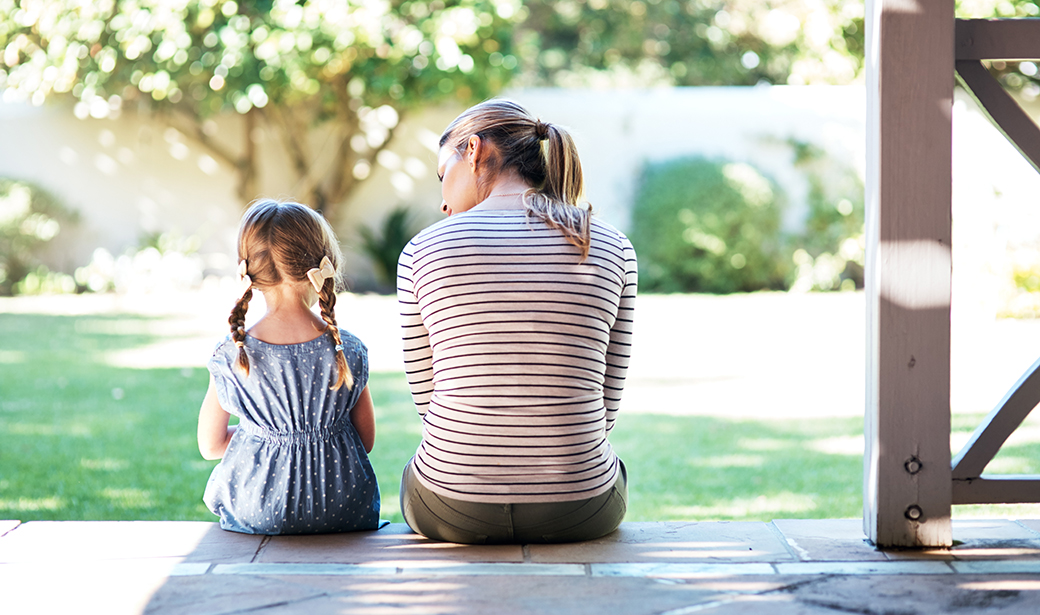
Already in 2021, there has been an influx of news about scary events. The riots and protests at Capitol Hill, the rising death rates of COVID-19, and a new strand of the virus emerging are frightening enough for adults to process. Still, it can feel overwhelming for children who don’t fully know what is happening.
You may want to protect your child from the horrors of the world, but avoiding the topic won’t work long-term. Children will hear about scary things from their friends, social media, or television, and if they don’t process their feelings about these topics in a safe place, they may feel more afraid or anxious than they need to be.
Talking to your kids about scary events will never be easy, but it is better for them to hear about it from you than someone else. As their safe and trusted adult, you can reassure them that you will do whatever you can to keep them safe and reduce their fears by using some of these tips in discussing difficult topics.
Check-in with yourself. Before talking to your child about scary news, assess how you are feeling about it first. You don’t need to talk about a tragedy or difficult event right after it happens, but make sure to do it before your child returns to school the next day. Give yourself some time to process the news first and work through your initial reactions. If you are in a panic or feel angry or sad, your child will pick up on that and feel a heightened sense of fear. When you break difficult news to your child, it is important to model calm behavior to put them at ease.
Make sure it’s developmentally appropriate. Young children, ages 8 and under, only need brief and simple information. Focus more on reassuring them that they are safe and protected and how they can be kind to others. Upper elementary and early middle school students, ages 8 to 12, can handle a bit more information, and you can help them understand safety plans and think of alternatives to violent behaviors. Youths ages 13 to 18 can have strong thoughts or opinions about the event and what causes violence in society. Be open to hearing what they have to say and talk about what they can do in their own communities to promote kindness and safety.
Stick to the facts. Your kids may have a lot of questions about scary events, and often we don’t have the answers. Social media may sway opinions one way or the other, but make sure to stick to the facts and not create theories to explain different behaviors. You should not expose younger children to violent video clips or images, but you can be honest but brief in answering their questions. For example, if your child asks if people died during the riots at Capitol Hill, you can reply by saying: “Yes, a few people died, and some were injured.”
Listen to their questions and fears. As their caregiver, it is crucial for kids to feel that they can come to you when they are afraid or feeling vulnerable. Don’t diminish their fears by saying everything is fine or telling them not to worry, but listen to and acknowledge their feelings about the situation. Let them know that it’s okay to be sad or scared, but help them develop coping strategies to work through their fears. Some ways kids can express their feelings is through art or play. These avenues can help them process and work through their emotions when they don’t know how to verbalize them.
Remind them of the helpers. First of all, make sure your kids know that even though scary events are going on in the world, they are safe at this moment. Remind your child that there are helpers they can always turn to within the community. Some of those people are doctors, nurses, police officers, firefighters, teachers, and counselors. Let them know who they can call when something scary happens, or come up with a safety plan in the case of an emergency to help kids feel more prepared and in control.
Remember that many people are good. Though the riots at the Capitol may make your child feel scared or helpless, help them remember that most people in the world are good. Most humans seek to help each other, not hurt. Come up with a list of all the kind people they know, such as family members, friends, teachers, tutors, babysitters, etc. Keep adding to that list when new names or people come to mind.
It may take some time to restore your child’s sense of security, but maintain their routine and give them some time to process the news and their feelings with you so they can return to being a kid.

Emily currently lives in Orange County, California after spending four years in Illinois and half a year teaching in Florence, Italy. She holds a B.A. in English Literature from Knox College and an M.A. in Counseling from the University of San Diego and has taught English to native speakers and ESL students for over three years. When she’s not working as a School Counselor or writing, she enjoys traveling the world, playing instruments, and blogging about Millennial experiences at Long Live the Twenties.
